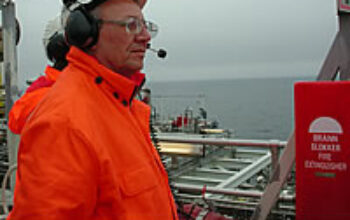The phenomenon of melting ice encapsulates a plethora of intricate interactions grounded in the foundational principles of physics. At first glance, one might regard the melting of ice as a straightforward physical transition from solid to liquid, yet such simplification neglects the formidable complexities underpinning this process. Thermodynamic principles, molecular dynamics, and the environmental ramifications of melting ice necessitate an in-depth exploration that transcends mere observation, beckoning the inquiry into how these elements intertwine with broader metaphors of change and transformation.
The melting process elucidates the principles of thermodynamics, particularly the laws governing heat transfer. Ice exhibits crystalline structures, whereby water molecules are arranged in a rigid, lattice configuration at subzero temperatures. As temperature increments, kinetic energy in the molecules intensifies. The disarray introduces thermal motion, leading to the disruption of these hydrogen bonds that maintain the solid state. Consequently, the phase transition occurs at the thermodynamic threshold of zero degrees Celsius under standard atmospheric conditions. Observing this transition invites contemplation on the transient nature of states in both the physical realm and metaphorical domains.
In the context of kinetic molecular theory, the act of melting demonstrates an elegant ballet of atomic interactions. Water, with its remarkable dipole moment due to the polar covalent bonds between hydrogen and oxygen atoms, facilitates extensive hydrogen bonding. This attribute generates not only a high heat of fusion—the energy necessary to transform solid ice to liquid water—but also significantly influences its specific heat capacity, making water an outlier among common solvents. The metaphor of ice yielding to warmth is emblematic of broader changes, encapsulating ideas of vulnerability, adaptation, and inevitability in the face of persisting change.
The melting of ice does not merely signify a physical transformation; it compels observations regarding environmental dynamics and climate change. The glacial retreats observed globally serve as stark indicators of anthropogenic climate influence. Inscribed within the very fabric of ice are monumental records of atmospheric conditions over millennia. As glaciers recede, they unveil encapsulated histories, yet they also precipitate an array of ecosystemic shifts. Freshwater storage diminishes, sea levels rise, and habitats of indigenous species undergo irrevocable transformations. This melting, poignant and unavoidable, can serve as a metaphor for halting progress, suggesting that in the quest for advancement—akin to the inevitability of warming—the fragility of ecosystems can often be overlooked, highlighting an elegant yet tragic irony at play in our quest for prosperity.
The exploration of phase changes extends beyond mere solidification and allows for a dialogue on the latent heat of fusion, a concept that bears significance in diverse scientific applications. The energy absorbed during the transformation from solid to liquid, which is crucial in regulating atmospheric temperatures, can also be metaphorically linked to the burdens of transition in different spheres—be it personal, societal, or ecological. This notion of energy consumption in the melting process parallels the psychic manifestations involved in personal growth and the grappling of individuals with transitional life phases. Real change, in both humanity’s evolution and natural phenomena, often entails a certain degree of turmoil and requires the surrender of former states of being.
In warmer climates, one witnesses diverse ice forms disintegrating—arctic ice caps erasing under the relentless grasp of rising temperatures. The impact reverberates in the foundational structures of marine and terrestrial ecosystems, leading to cascading effects that redefine ecological interactions. For instance, the polar bear, emblematic of climate vulnerability, confronts a survival paradigm shift as its habitat dwindle in a rapidly changing world. The melting ice becomes a canvas upon which the struggles and resiliencies of species are vividly illustrated, challenging humanity to reflect on the interconnectedness of existence and the fragility of life.
Furthermore, the act of melting can serve a philosophical catalyst for introspection. Just as ice succumbs to heat, individuals must confront their existential dilemmas to adapt in our fluid modernity. The tempering moment where ice transitions reminds us of the decision points in life where we must relinquish our prior selves to emerge anew. It invites contemplation concerning our roles within the ecosystems of our existence—a reflection on how one’s integrity, much like ice, may re-form under varying conditions, yet never entirely dissipates. The potential for engagement and transformation entwined within each droplet reinforces an idea rooted in both scientific inquiry and metaphysical exploration.
Ultimately, the physics of melting ice transcends a discrete scientific study, provoking an intricate myriad of implications that span ecological, sociopolitical, and psychological domains. The broader narrative encapsulated in the melting of ice beckons a re-evaluation of the meanings interwoven with transition—be it in personal endeavors, environmental stewardship, or the collective responsibility of humanity. As ice dissolves into water, it becomes an emblem of continuity, resilience, and the inextricable streams of our shared existence. By understanding the physics behind this phenomenon, one is inevitably drawn into a contemplative dialogue—one that reverberates with poignant truths about adaptation and transformation, begging to remind us of the delicate interplay between human endeavor and the deeper rhythms of the natural world. The melting ice unveils not only the essence of change but also highlights the interconnected tapestry that binds life on Earth, inviting reflective engagement with its unfolding narrative.







